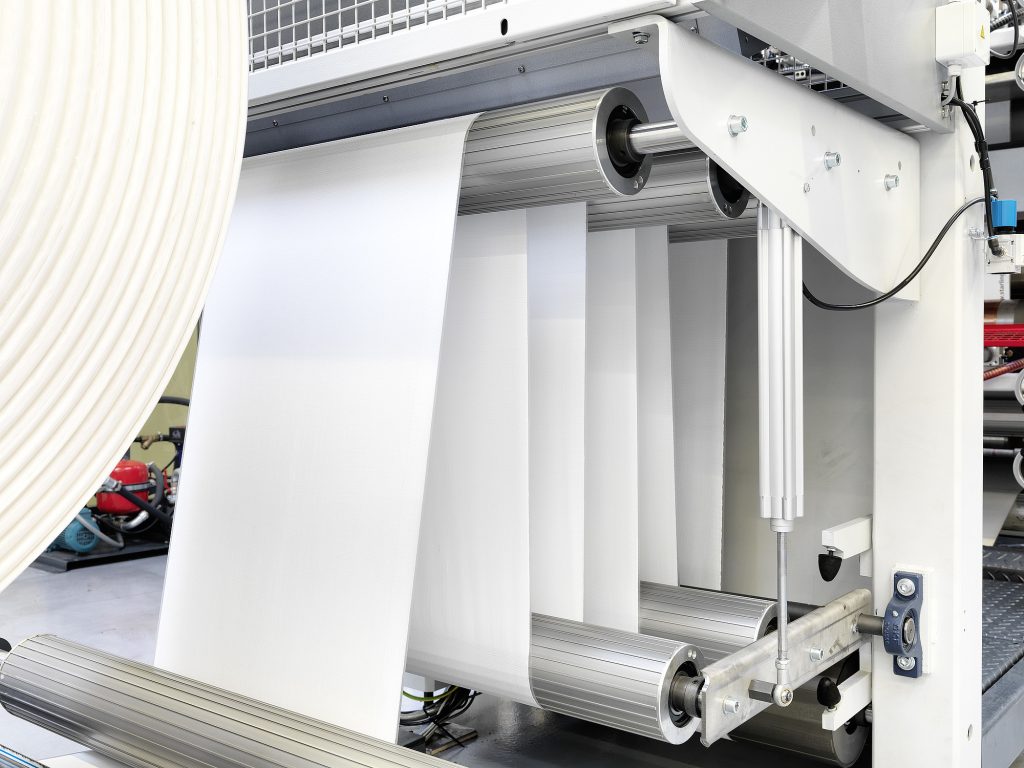
Introduction
The global logistics sector, valued at $10.6 trillion in 2024, faces mounting pressure to adopt sustainable packaging solutions that align with Environmental, Social, and Governance (ESG) mandates. Anti-bulge Flexible Intermediate Bulk Containers (FIBCs) have emerged as a critical innovation, combining load stability with eco-friendly materials to meet these demands. VidePak, a leader in woven bag manufacturing since 2008, leverages its 30+ years of expertise and Austrian Starlinger technology to produce FIBCs that exceed ISO 21898 safety standards while supporting circular economy goals. With 526 employees and $80 million in annual sales, the company operates 100+ circular looms and 30+ printing machines, enabling large-scale customization for clients in construction, agriculture, and retail. This report examines how VidePak’s anti-bulge FIBCs address ESG priorities through material excellence and logistics-focused design.
ESG Alignment: Material and Production Innovations
1. Recyclable PP Resins and Closed-Loop Systems
VidePak’s FIBCs use virgin PP resins from BASF and Sinopec, which retain 95% of their mechanical properties after recycling. Starlinger’s extrusion lines ensure precise melt flow indices (MFI: 8–12 g/10 min per ASTM D1238), minimizing material waste by 15% during production. The company’s closed-loop system recovers 98% of scrap PP, reducing reliance on virgin plastics and aligning with the EU’s Circular Economy Action Plan.
- Case Study: A 2024 project with a German chemical distributor demonstrated that switching to VidePak’s FIBCs cut annual plastic waste by 1,200 tons and CO₂ emissions by 3,800 tons.
2. Energy Efficiency and Carbon Neutrality
Starlinger’s iQ4.0-enabled machines reduce energy consumption by 30% compared to conventional systems. VidePak’s solar-powered facility in Jiangsu, China, offsets 40% of its energy needs, targeting full carbon neutrality by 2030.
Logistics-Centric Design: Enhancing Efficiency and Safety
1. Anti-Bulge Technology for Load Stability
Anti-bulge FIBCs prevent bag deformation under dynamic loads (e.g., 1,000–2,000 kg during shipping), reducing spillage risks by 50%. Key features include:
- Reinforced Seams: Ultrasonic bonding increases seam strength by 35% (ISO 2206:2002).
- Cross-Woven Grids: 12 threads/cm² density ensures uniform weight distribution.
Table 1: Performance Metrics of VidePak’s FIBCs
| Parameter | Standard | VidePak’s Performance |
|---|---|---|
| Tensile Strength | ISO 527-2 | 70–80 N/cm² |
| Load Capacity | ISO 21898 | 2,000 kg |
| Recyclability Rate | EN 13432 | 95% PP recovery |
| Moisture Resistance | ASTM E96 | <2% water vapor transmission |
2. Ergonomic Features for Streamlined Logistics
- Forklift-Friendly Loops: 10 cm-wide loops enable seamless palletization, reducing loading times by 20%.
- Anti-Slip Coating: Silicone-treated bases prevent shifting during transit, critical for stacking heights up to 7 meters.
- Customizable QR Codes: Blockchain-enabled tracking systems reduce supply chain disputes by 25%, as piloted in a 2024 partnership with a Dutch logistics firm.
FAQs: Addressing Industry Pain Points
Q: How do anti-bulge FIBCs compare to traditional bulk bags in cost efficiency?
A: While initial costs are 10–15% higher, VidePak’s FIBCs reduce long-term expenses through:
- Reusability: Up to 8 cycles without performance loss.
- Lower Waste Fees: 40% reduction in landfill costs due to recyclability.
Q: Are these bags suitable for hazardous material transport?
A: Yes. VidePak’s PE-lined FIBCs comply with UN 13H1/13H2 standards for chemicals, featuring UV-resistant coatings and anti-static threads.
Market Impact and Future Trends
The anti-bulge FIBC market is projected to grow at a CAGR of 6.8% through 2030, driven by ESG regulations like the EU’s Packaging and Packaging Waste Directive (PPWD). VidePak is piloting PP-PLA hybrid bags with 120-day compostability, targeting industries like organic agriculture. Additionally, AI-driven demand forecasting tools are being integrated to optimize inventory turnover by 18%.
Conclusion
VidePak’s anti-bulge FIBCs exemplify how innovation in material science and logistics design can harmonize profitability with planetary stewardship. By prioritizing recyclability, energy efficiency, and user-centric features, the company not only meets current ESG benchmarks but also sets new standards for the future. For industries seeking to reduce their environmental footprint without compromising operational efficiency, VidePak offers a proven, scalable solution.
Explore Further:
- Discover how anti-bulge FIBCs enhance protection in logistics.
- Learn about sustainable practices in bulk packaging.
This report synthesizes insights from industry benchmarks, regulatory frameworks, and VidePak’s operational data to provide actionable strategies for businesses transitioning to ESG-compliant packaging.